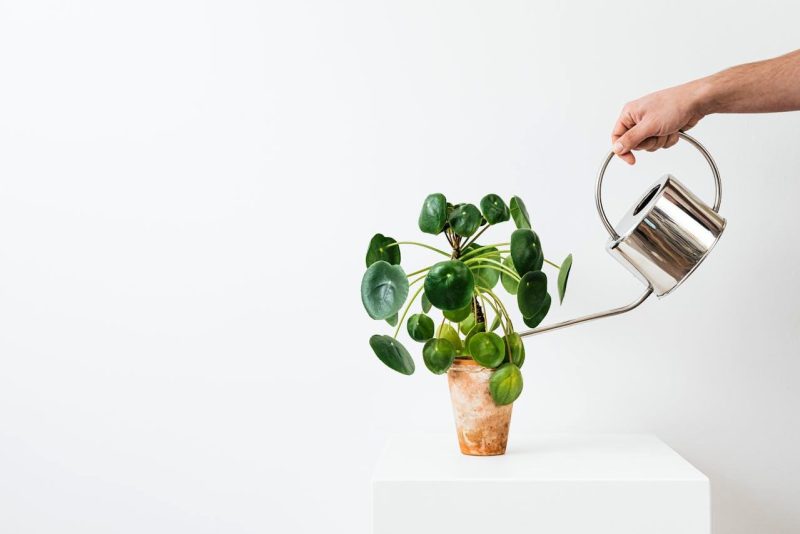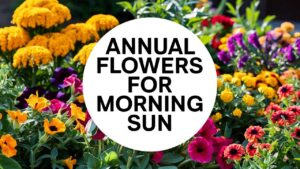When planning a vacation, the last thing anyone wants to worry about is the well-being of their indoor plants. Fortunately, with a little preparation, you can keep your green friends happy and hydrated even when you’re lounging on the beach or exploring foreign lands.
On this page, we will discuss various effective methods for watering your indoor plants while you’re away, including automatic watering systems, soil water crystals, self-watering pots, glass watering bulbs, and enlisting the help of friends or house sitters from Care.com. Let’s make sure your plants thrive while you relax.
Automatic Watering Systems
One of the most effective ways to ensure your plants receive consistent hydration is by investing in an automatic watering system. These systems can be a game-changer for plant parents who frequently travel.
Types of Automatic Watering Systems
Drip Irrigation Kits: These kits deliver water directly to the root zone of your plants through a series of tubes and emitters. You can adjust the flow rate to match your plants’ needs. Drip irrigation systems can be set on timers, ensuring your plants get the right amount of water at set intervals.
Timer-controlled Systems: If you have a larger collection of plants, a timer-controlled indoor watering system may be ideal. These systems allow you to set a specific schedule for watering, and some even come with separate zones for various plant types, making it easier to customize care.
Smart Irrigation Systems: For the tech-savvy, smart irrigation systems use sensors and Wi-Fi connectivity to monitor soil moisture levels and automatically adjust watering times and amounts. Many of these systems come with smartphone apps, allowing you to manage your plants even while you travel.
How to Set Up an Automatic Watering System
Setting up an automatic watering system is usually straightforward. Here’s a basic guide to get you started:
Choose the Right System: Consider the size of your indoor plant collection and your budget. For a few pots, a simple drip kit or glass watering bulbs may suffice. For a larger set-up, a comprehensive timer system may be needed.
Install the Equipment: Follow the manufacturer’s instructions to set up your watering system. Make sure to position the hoses and emitters near the base of each plant.
Program the Timer: If using a timer system, set it to water based on the specific needs of your plants. Most plants require watering at least once every few days, but this varies widely depending on species, size, and environmental conditions.
Test Before You Leave: Run the system for a few days before your vacation to ensure everything is working correctly. This gives you peace of mind to know that it will function while you’re away.
By using an automatic watering system, you can take a long vacation without the worry of your plants wilting or dying from lack of water.
Soil Water Crystals
Another innovative solution for keeping your indoor plants hydrated while you enjoy your time off is the use of soil water crystals. These water-retaining polymers are a fantastic addition to any potting mix, providing a simple way to ensure moisture is available to your plants even when you are not around.
What Are Soil Water Crystals?
Soil water crystals, or hydrogel crystals, are small, superabsorbent polymers that can absorb and retain hundreds of times their weight in water. When mixed into your potting soil, they release moisture gradually, significantly reducing the frequency of watering needed.
How to Use Soil Water Crystals
Prepare the Soil: Before planting or when repotting your plants, mix soil water crystals into your potting mix according to the package instructions. Generally, a small amount (about 1-2 tablespoons per gallon of soil) is sufficient.
Water Thoroughly: After incorporating the crystals into your soil, water the plant well to initiate the absorption process. The crystals will swell and begin to hold onto water.
Monitor Plant Health: While soil water crystals can significantly extend the time between waterings, it’s essential to monitor your plants’ health. Ensure they are not drying out too much, especially if you are in a hotter climate.
Using soil water crystals can keep your plants hydrated for weeks, making them an excellent option for longer vacations.
Self-Watering Pots
Self-watering pots are another practical solution for plant owners who travel. These pots are designed with a reservoir system that allows plants to draw water as needed, ensuring consistent moisture without constant attention.
How Self-Watering Pots Work
Self-watering pots typically consist of two main compartments: an upper pot for your plant and a lower reservoir for water. A wicking system connects the two compartments, allowing water to move up as the soil gets dry.
Benefits of Self-Watering Pots
Consistent Moisture: Your plants receive a steady supply of water, reducing the risk of overwatering or underwatering
Less Frequent Watering: Self-watering pots can often sustain plants for longer periods, making them ideal for those times you’ll be away for a week or more. Depending on the size of the reservoir, some pots can keep plants hydrated for several weeks.
Ease of Use: With self-watering pots, you don’t have to worry about remembering when to water. Simply fill the reservoir before you leave, and your plants can take care of themselves.
Choosing the Right Self-Watering Pot
When selecting a self-watering pot, consider the following:
Size: Ensure the pot is an appropriate size for your plant. It should still accommodate healthy growth while having enough space for the reservoir.
Material: Self-watering pots come in various materials, including plastic, ceramic, and terracotta. Consider durability and aesthetics based on where you’ll be placing your plants.
Design Features: Some self-watering pots come with built-in moisture indicators or additional drain holes to prevent over-saturation. Choose a pot with features that align with your needs.
Reviews: Before purchasing, check reviews to see how effective the pot is for the types of plants you own. Some designs work better for specific types of plants.
Self-watering pots can alleviate the stress of plant care while you’re on vacation and are an excellent investment for all plant lovers.
Glass Watering Bulbs
If you’re looking for a more decorative and low-tech option for watering plants while away, glass watering bulbs could be a great choice. These colorful, whimsical tools provide an eye-catching way to ensure your plants receive adequate moisture.
How Glass Watering Bulbs Work
Glass watering bulbs are typically made from blown glass and operate by slowly releasing water into the soil. The design features a pointed end that you insert into the soil, while the bulb itself holds a supply of water.
How to Use Glass Watering Bulbs
Fill the Bulbs: Fill the watering bulbs with water. You can add plant food or fertilizer to the water for an added nutrient boost if you wish.
Insert into Soil: After watering your plants thoroughly, insert the pointed end of the bulb into the soil near the roots, ensuring it’s secure and stable.
Monitor and Refill: Depending on your plant’s needs and the bulb size, you may need to refill the bulbs periodically. In general, smaller bulbs will deplete faster than larger ones.
Placement: Avoid placing the bulbs in direct sunlight, as heat can cause the water to evaporate more quickly. Position them in shaded areas or where moisture retention is greatest.
Although glass watering bulbs are not suitable for every situation, they can provide a charming way to maintain moisture in your plants for short trips. Just be aware of the water level and make sure your plant won’t dry out.
Enlisting Friends or House Sitters from Care.com

Finally, if you’re concerned that none of the aforementioned solutions might adequately meet your plants’ needs, consider asking a reliable friend or hiring a house sitter through platforms like Care.com. This option adds a personal touch to your plant care and ensures that your plants receive the attention they deserve.
Benefits of Having a Friend or House Sitter
Personal Attention: A person physically monitoring your plants can assess their specific needs. They can check for signs of wilting, pests, or environmental changes that automated methods wouldn’t catch.
Customization: A friend or hired house sitter can provide care tailored to your plant species. Some plants may require different watering schedules or conditions that only a knowledgeable person can manage.
Security: Having someone in your home can deter theft and maintain a sense of normalcy while you’re away.
Finding Someone to Help
Ask Friends or Family: Start by asking someone you trust who is familiar with plant care. Ensure they’re comfortable with the responsibility.
Use Care.com: If you don’t have someone in mind, Care.com and similar websites allow you to find experienced house sitters who offer plant care as part of their services. Take the time to vet sitters based on reviews and personal interview.
Provide Clear Instructions: Whether it is a friend or a hired care provider, leave detailed instructions about your plants, including watering schedules, sunlight needs, and any special care tips they should follow.
A Plant Care Guide: Consider creating a simple care guide for your friend or sitter. Include information on each plant’s needs, how to check soil moisture, and even when to prune or repot if necessary.
Conclusion
Ensuring your indoor plants remain thriving while you enjoy your vacation is entirely achievable with the right methods. From automatic watering systems to self-watering pots, soil water crystals, glass watering bulbs, and the support of friends or care providers, there are plenty of options available.









